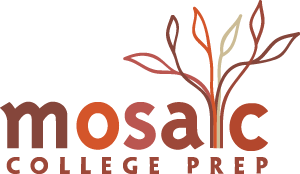The College Board’s announcement that the SAT would be undertaking a significant redesign sparked a heated debate about whether the proposed changes would be advantageous or harmful to students. The College Board’s stated purpose of the redesign is to democratize the test by more accurately reflecting the curricula taught in high schools rather than arcane vocabulary words. Some have applauded the College Board’s efforts in this regard, while others have accused the organization of simply trying to win back the massive chunk of the market share that the SAT has lost in recent years to the ever-more popular ACT. Whatever the motivation, the changes are indeed significant and, from a tutor’s perspective, should make the SAT somewhat less stressful for students.
The change that has been getting the most attention has to do with vocabulary. A large number of vocab words currently included on the tests have been deemed archaic and replaced by words more commonly used today. Of course, there is some debate over what exactly is meant by “archaic,” especially given that some of the vocab words removed are taught as young as middle school. Myriad and plethora are included in the list of words to be removed, and I for one certainly can recall using the word plethora with great joy as early as age 10. But, for students, this is sure to come as a relief, and even though I enjoy the word “plethora”, it will be a relief for tutors, as well, as we will be able to spend more time on other fundamental skills rather than on drilling vocab.
The Reading and Writing section of the SAT has been re-named The Evidence-Based Reading and Writing Section, so-called because the questions will now ask the student to select a quote from the passage to act as evidence supporting his or her answer selection. In essence, the test-makers are now spelling out the process that we, as SAT tutors already train our students to do. The passages selected for the Reading sections will be drawn from sources that incorporate Social Studies and Science documents that students should have encountered during their high school career, and in this way, the College Board claims it is reflecting one’s mastering of education and preparedness for college more effectively. From a tutoring standpoint, this will mean ascertaining how strong a student’s skills are in these two areas and potentially dedicating a session or two to a specially tailored lesson reviewing history or science.
The Math Section has been split into three newly named sections, but these changes will not likely affect tutoring and studying strategies too much, as the same basic mathematical concepts will be covered in the test. As to the essay, it will now be optional whereas before it was mandatory, and it will be scored separately. The method for assessing the essay will shift towards a focus on content rather than on style. At present, the essay is graded on sentence structure and fluidity of language as opposed to strong evidence backing up one’s point, and thus, we tutors will have to adjust our focus when helping students write their practice essays.
Finally, following once again in the ACT’s footsteps, there will no longer be penalties for guessing (a move that few are complaining about as it was always an overly-harsh practice).
These changes won’t go into affect until 2016, so for now, study techniques for tutors and students remain the same. Once the changes do come around, the focus of SAT tutoring will certainly shift to reflect this new redesign. Hopefully, the College Board’s goal of making the SAT more accurately assess the skills taught in school will be met, and as the President of the College Board says, students will be faced with “worthy challenges, not artificial obstacles.” We tutors will be ready to help our students step up to those worthy challenges with confidence and success.

